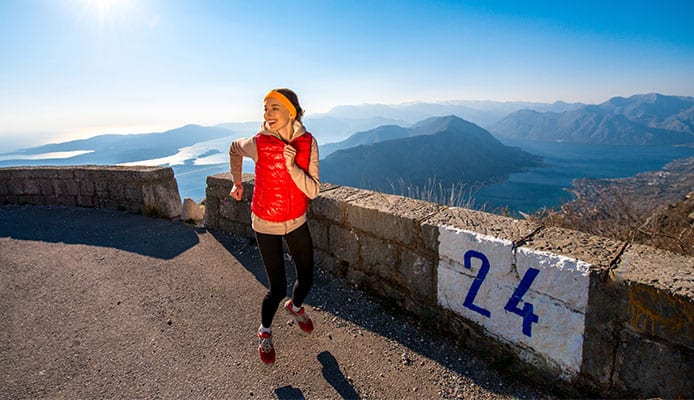
Who doesn’t like wearing a vest – it’s warm, cozy, and incredibly convenient. Its main task is keeping the core of your body warm and, when it comes to this, it doesn’t get any warmer than down. As a great insulator, down is very effective in retaining most of the warmth your body creates, all the while being lightweight and exceptionally comfortable to wear. Perhaps the best thing about down vests is their versatility. You can wear them as a layer under a winter jacket for additional warmth, on their own when days get chilly, or in any other way you can think of.
This article focuses on giving you pointers on how to find the perfect down jacket in the sea of products, and which features you should look for. We’ve also picked out some fantastic vests for our list for any type of activity, so be sure to take a look.
OUR TOP PICK
Eddie Bauer Men’s CirrusLite
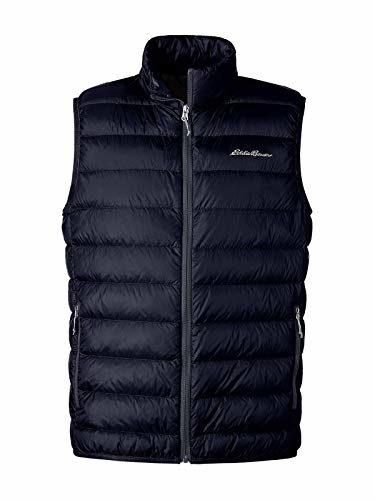
- Stand Out Features - Why We Love It
- Ultralight and very compact
- Wind-resistant
- DWR-coated shell
- Higher neck for warmth
- RDS-certified down
Fill power: 650 fill, RDS-certified
Shell Material: Nylon (with StormRepel DWR coating)
Lining: Nylon
EDITORS CHOICE
Amazon Essentials Lightweight
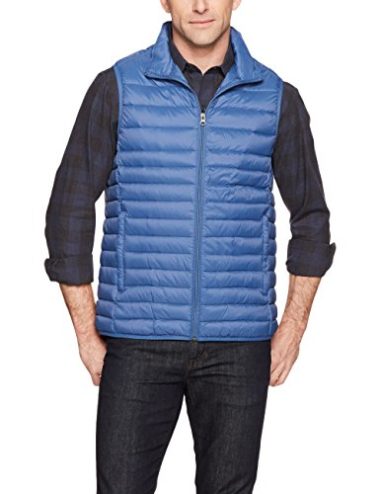
- Stand Out Features - Why We Love It
- Elastic armholes
- Water-resistant shell
- Comes with a carry bag
- Zippered pockets (with cover)
Down Type: Duck down
Down/Feather ratio: 90% Down, 10% Feathers
Shell Material: Nylon
Lining: Nylon
BEST VALUE
XPOSURZONE Packable Lightweight
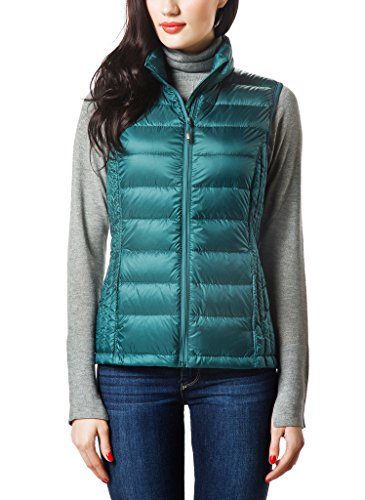
- Stand Out Features - Why We Love It
- Ultralight and incredibly comfortable
- Zippered pockets with flaps
- Slim-fit waist
- Standing collar
- Budget-friendly
Down Type: Duck down
Down/Feather ratio: 90% Down, 10% Feathers
Shell Material: Nylon
Lining: Nylon
The North Face Nuptse Men’s
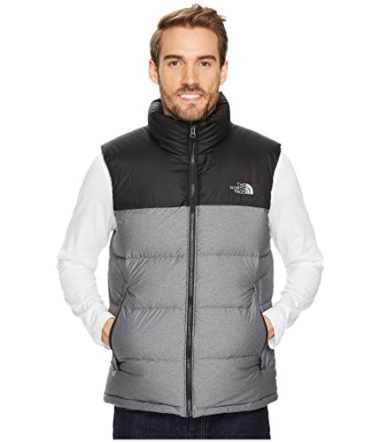
- Stand Out Features - Why We Love It
- Can be packed in internal pocket
- Cinch-cord hem
- Double-layer Taffeta on shoulders
- Secure hand pockets
- Compatible with other The North Face garments
Fill power: 700 fill
Down Type: Goose down
Shell Material: Nylon, Taffeta
Lining: Nylon
The North Face Women’s Nuptse 2 Down Vest
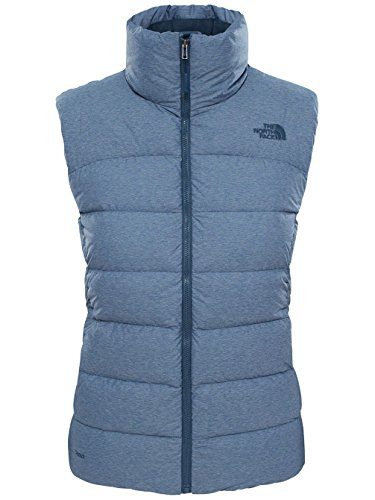
- What Makes This Down Vest Stand Out
- Numerous color choices
- DWR surface coating
- Brushed lining on the collar
- Can be packed in internal pocket
- Adjustable hemline
Fill power: 700 fill
Down Type: Goose down
Shell Material: Polyester 65D
Lining: Polyester
The North Face Men’s Aconcagua
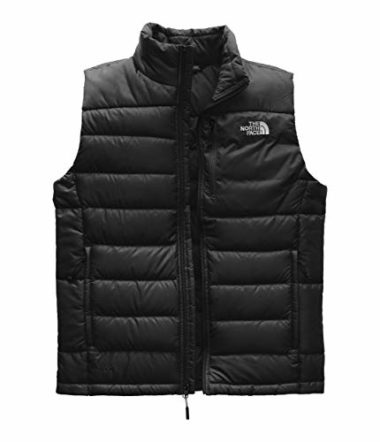
- Stand Out Features - Why We Love It
- Incredibly lightweight
- Largely made from recycled materials
- RDS-certified down used
- Secure chest and hand pockets
- Reinforced side and shoulder panels
Fill power: 550 fill
Down Type: Goose down, RDS-certified
Shell Material: Polyester
Lining: Polyester
Marmot Men’s Zeus
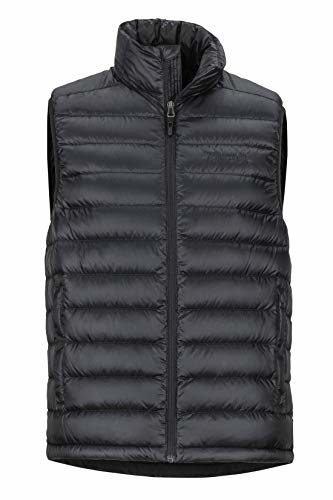
- Stand Out Features - Why We Love It
- Excellent warmth
- Ripstop shell
- Down Defender treatment (hydrophobic down)
- Elastic drawcord hem
- High foldable collar
Fill power: 700 fill
Down Type: Goose down (with Down Defender treatment)
Shell Material: Polyester (DWR-treated)
Lining: Polyester
Lands’ End Men’s 600
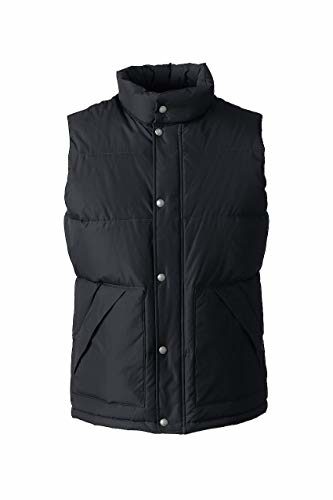
- Stand Out Features - Why We Love It
- HyperDry treated down
- RDS-certified (ethically sourced down)
- Affordable
- Comfortable and bulk-free
- Zipper with storm flap
Fill power: 600 fill
Down/Feather ratio: 80% Down, 20% Feathers
Shell Material: Nylon
Lining: Polyester
How To Choose The Best Down Vest – Buying Guide
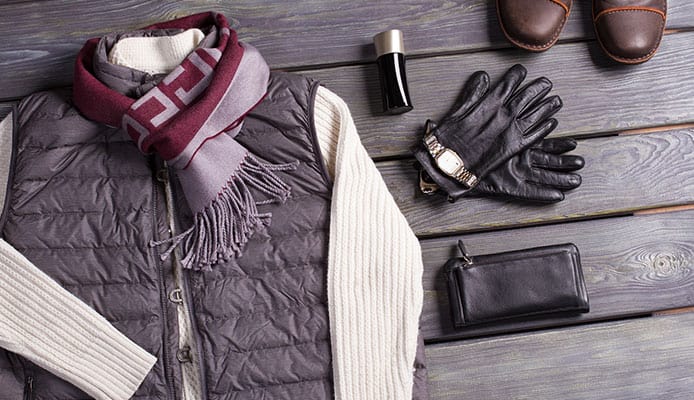
If comfort and warmth are your main goals when buying, down-filled vests should be your choice. Compared to the alternatives, down vests are significantly lighter and much easier to pack. Perhaps their biggest upside is the versatility – they work as midlayers when layering for skiing, they keep your core cozy and warm on cold-weather hikes, and you can wear them casually on those slightly colder days. Finding the perfect vest is easy, as long as you know a thing or two about fill ratings, fill weight, features, and materials used. Take a look.
Down Fill Rating
When talking about down-filled clothing (including vests), one term keeps popping up – fill rating (power), which basically shows the quality. In order to explain it, we need to say a few things about down itself. Down is a natural undercoat found in birds (located underneath the outer harder feathers), with a function of keeping the bird warm. Goose and duck down are the most popular choices for clothing insulation because their down performs great in retaining warmth.
But how does down work? These very fine feathers have the ability to trap air in the air pockets between them, and these tiny air pockets work like insulation and retain warmth. Depending on its quality, down is more or less efficient in doing this. In order to measure this, we got fill power ratings.
The number you see when looking at a product represents the number of cubic inches one ounce of down can fill (in a plexiglass cylinder, under a small amount of weight). A higher rating means that the down is loftier (able to trap more air), and a better insulator compared to down with a lower rating.
The fill power for the products we reviewed ranges from 550 to 700, and over 850 for some of the best down vests (when talking strictly about warmth). Higher-rated down is more efficient in keeping you warm, making these vests lighter and less bulky. On the other hand, vests with a high rating also cost significantly more, and many people choose to go with moderate fill power and a bit higher weight.
Down Weight (Fill Amount)
One thing that is often overlooked is the fill amount, or the total weight of the down used in a vest. We already determined that 800-fill down is better than 500-fill down. However, a 500-fill vest can sometimes be warmer than an 800-fill vest, and this is where the weight comes in.
For example, 10oz of 500-fill down is going to be warmer than 5oz of 800-fill down, on the account that there’s more of it (compensating for the difference in quality). If the weight is the same, 800-fill would undoubtedly be warmer. However, most people don’t care about the total weight that much, but do mind the price tag.
Vests with a larger amount of down are not only heavier but also bulkier and more difficult to pack. Unless you are a hiking enthusiast who aims only for ultra lightweight down vests to keep in their hiking backpack, a few ounces shouldn’t be too big of a concern for you. We only wanted to show that the fill power is not the only deciding factor for warmth and that you shouldn’t shy away from lower fill vests if they are well made.
Type of Down
Depending on the manufacturer and the particular vest, different types of down are used. First of all, it can be sourced from ducks or geese. Goose down is generally better in quality and has a higher fill power. It comes in larger clusters that are more efficient in trapping air.
However, goose down is also pretty expensive, so many manufacturers choose the alternative. Most vests you’ll come across are filled with duck down. While still pretty efficient, it’s not as expensive to make as goose down, so these insulated vests are affordable for a larger number of people.
One more thing worth mentioning is the method of acquiring the down (whether it is ethically sourced or not). More and more products come with an RDS-certified tag on them, which stands for Responsible Down Standard. This means that the birds were not live-plucked or mistreated in any way.
All down goes through some sort of a cleaning process before vests are filled. However, some manufacturers additionally treat the down to improve some of its properties. For example, treated hydrophobic down has improved water-resistance. Regular down loses all of its properties when wet, but treated down resists water better and dries faster. Furthermore, treated hypoallergenic down reduces the chance of an allergic reaction (even though down itself isn’t an allergen, as we’ll explain later).
Finally, we also want to mention the down to feather ratio. Many manufacturers use a combination of down and feathers for filling their vests because using only down is simply too expensive. However, this leads to a loss of quality, since feathers are not nearly as effective in retaining warmth. This is why you need to look at this ratio when selecting a vest – obviously, the best winter vests have a higher percentage of down and a lower percentage of feathers. Unfortunately, higher down percentage usually means a higher price too.
Shell Material
While the down filling is very important, you shouldn’t overlook the materials used in making the shell. To cut down on weight as much as possible, many manufacturers use thin and lightweight materials. While this sounds great in theory, you can easily tear the vest if you brush against a branch or something sharp.
So, unless you’re very weight conscious or you’re going to wear the vest under a hardshell jacket, we advise you get a vest with a higher Denier rating. Materials most commonly used are polyester and nylon. Both are good choices (if a stronger material is used), and will give the vest the strength it needs for everyday use.
On top of this, many products in our down vest reviews come with additional DWR (Durable Water Repellent) coating, that makes the vest more resistant to water. This protective layer makes water droplets form into beads when they come in contact with the surface, and instead of soaking into the fabric they just roll off. To further improve this, some models even have reinforcements in the shoulder area.
All this being said, there are still significant differences between water-resistant and waterproof, and a truly waterproof down jacket doesn’t exist. So, if you get caught in a shower wearing only the vest, you can count on it getting soaked and losing all of its insulating properties.
Fit and Size
A great thing about vests is that it’s very easy to find a good fit, especially when compared to down jackets. Since there are no sleeves, you don’t have to worry about how the arms are going to fit, and you can concentrate only on the fit around your torso.
However, you still need to pay some attention when looking for the right fit. One of the things you need to consider is how you’re going to use the vest. If you plan to use it as a midlayer, you can go with a slimmer fit since you’re probably only going to wear a baselayer under it. On the other hand, if you’re going to use it for hiking or camping, it needs to have a looser fit so you can wear a shirt and other layers under it.
Unfortunately, vest sizes differ from one brand to another. Because of this, you need to be careful when choosing, and not go straight for the size you usually buy. Many products tend to run larger or smaller, and this can be a problem once your package arrives.
The best solution is if the manufacturer provides a sizing chart so you can compare the measurements. Another good idea is to go through user reviews and see what others had to say about how the vest fits them. Both warmth and a great fit contribute to overall comfort while wearing the vest, so pay attention to this when buying.
Design Features
Now that we have the main things covered, let’s talk a bit about the design. All down-filled vests and jackets come with baffles, which are separate shelves or pockets of space that keep the down in place and prevent it from moving around. All vests we featured have horizontal baffles, so the down inside the vest is spread equally top-to-bottom and there are no cold spots.
Baffles come in different shapes and sizes, and we’re not going to go into unnecessary details here. The main thing you need to know is that they are usually wider on jackets with higher fill weight (to accommodate all the down), and narrower on jackets with a higher fill power and lower fill weight.
Another thing you should check before buying a vest is the hem design. To make the vest most effective in retaining your body heat, you need a way to tighten the hem so that the heat doesn’t escape. Unfortunately, many vests come with an open hem that you can’t tighten. While this reduces weight, it compromises the vest’s performance. Better models either have an elastic hem that sits tight against your body or comes with a cinch cord so you can tighten it if you want to.
Since vests don’t come with sleeves, you will be losing a certain amount of heat through the armholes. However, having elastic armholes can really help with this and create a tighter fit. Of course, you still have totally free arm movement, which is one of the things that makes vests so attractive in the first place.
All of the models we featured come with a raised collar, which gives you additional protection and keeps your neck warm and cozy. Some vests also come with a neat zipper garage, which allows you to zip the vest all the way up without the zipper chafing your chin.
Of course, a great vest couldn’t go without well-placed pockets. Most models come with two outer handwarmer pockets, but the design is different from one model to the other. It’s a plus if they close with a zipper that will keep the content safe and dry, and even better if there is a flap on top to keep dirt and water out.
In addition to these, some models come with an outer chest pocket, which is convenient for some smaller and less bulky items such as cards or money. However, a vest with an internal pocket is your best bet for keeping your valuables safe, especially if it comes with a zipper.
A feature that we really like is that the mentioned internal pocket can double as a stuff sack to pack the vest. This is possible on The North Face and Marmot vests we featured on our list. Even though most down vests can be packed very compact, it’s very convenient if their own pocket can double as a bag so it takes less space in your ski backpack. As we mentioned earlier, vests with a higher fill rating weigh less and pack smaller, so keep this in mind if you need to save space when packing.
Warmth
How warm your vest is going to depend on a combination of things we talked about so far. Two of the most important factors are certainly the fill power and down weight. Down with higher fill power is more efficient at trapping air and is a better insulator, and it makes perfect sense that more down equals more warmth (but also more bulk and weight).
The type of down also plays a role here (duck or goose), as well as the percentage of feathers a filling has (more feathers equals less warmth). Still, when it comes to warmth of your hiking vest, down is far superior to other and synthetic insulation systems. On the other hand, it falls behind in terms of breathability and keeping you dry. Don’t forget that you can also feel too warm in a vest. If you live in a moderate climate, a 900-fill vest can be too much – you will spend a large amount of money on it and won’t be comfortable wearing it.
You might also be interested in:
Durability
When buying a new piece of clothing of any kind, durability ranks very high. With this in mind, you need to be particularly careful when buying down vests, and other down clothing in general. In order to maximally reduce the weight, manufacturers use ultra-lightweight materials to make the shell. While this is certainly great for packing and saving space, it may be a problem if you expect your vest to withstand some wear and tear.
Unless you are highly conscious about the weight of your gear, don’t shy away from buying a vest that is a few ounces heavier – it may go a long way in terms of longevity. As we mentioned in the materials section, top-rated down vests have shells with a higher denier rating, which this means that the fabric is stronger and won’t get teared easily. However, if you accidentally tear your vest, make sure to learn a thing or two about down clothing repair – it may be much cheaper than buying a new one.
FAQs

Q: What Is Better, Goose Or Duck Down?
Even though both are used in the production of down vests, goose and duck down do not offer the same level of quality. In general, goose down is better than the down sourced from a duck, and there are a few reasons for this. When talking about how lofty down is, you need to mention down clusters (collections of fine down feathers). The larger a cluster is, the better it works as an insulator.
Because geese are larger birds than ducks, these clusters are usually larger too. In addition, they are most often harvested from older birds (as a byproduct in other industries), meaning that these birds got the chance to mature and the down has developed properly. All this leads to high-quality down with excellent fill rating.
Duck down, on the other hand, comes in smaller clusters. Ducks are smaller birds and their down isn’t as efficient insulator when compared to goose down. An additional problem is the odor – while goose down can be almost odorless, duck down can have a strong odor. This means that it needs to go through more intense treatment before it can be used.
However, all this doesn’t mean that duck down is bad. Its main advantage is certainly affordability – it’s more widely available and much cheaper to produce. Manufacturers use it in their products because it allows them to lower the price and make the vest affordable to a larger number of people. However, the best winter vests use goose down with high fill ratings.
But when talking about vest performance, we shouldn’t limit ourselves only on the down source. As we discussed earlier, the fill power and weight also play significant roles. While goose down is usually better rated, a 700-fill duck down is still going to outperform 600-fill goose down. Also, don’t forget to consider the amount of down used.
Q: Can I Be Allergic To Down?
While this is not very common, some people have allergic reactions to down. However, research studies have determined that people aren’t allergic to down itself, but rather to the other things that are mixed with down – dust, mites, and some impurities that are left over.
This is why it’s so important that the down goes through a proper cleaning process before it’s used in down filled vests, jackets, and any other piece of clothing. In addition to this, some manufacturers use hypoallergenic down, which has undergone additional treatment to help remove known allergens. So, if you have a problem of this type but still wish to buy a down vest, this might be the solution.
Q: Does The Type Of Filling Decide The Price?
Yes, it does. Down isn’t the cheapest insulator out there, and its quality level is directly related to the price. As we mentioned earlier, goose down vests are generally more expensive than duck down. In fact, any down with a higher fill rating is going to be more expensive because it’s a better insulator and allows the manufacturer to reduce vest weight and bulk.
In addition, more filling is going to lead to a higher price too, which makes sense – a vest with 10oz of 600-fill down is going to cost more than a vest with 5oz of 600-fill down. One more thing worth mentioning when discussing the price of puffer vests is the down to feather ratio. Feathers are much cheaper than down, meaning that vests with a higher feather percentage are less expensive but also less warm.
Luckily, you don’t need to buy the most expensive down vest. In most scenarios, a duck down vest with a 600-700 fill power will do the job just fine, and not ruin your budget along the way. If you plan to use it as a layer under your ski jacket or snowboard jacket, this type of vest is going to give you all the warmth you need. If you plan to wear it as an outer layer when it’s really cold, you may want to look at more high-end products. Just keep in mind that many users say that, when it comes to normal use, it’s often not worth the difference in price.
Q: Why Choose Down?
The biggest upside of choosing down (instead of synthetic insulation) is the insulation power it provides. It’s the best natural insulator you can find. Compared to all other alternatives, it gives you the best warmth while keeping the weight low. This goes a long way in terms of comfort and convenience.
Wearing a lightweight vest that feels cozy and warm feels great. In addition, down is known to be very compressible, meaning that you can pack it very tight. This allows you to always have it on your hiking checklist and take it with you because it doesn’t require much space.
Down is the best choice you can make for very cold and dry conditions. It’s low bulk and low weight, while performing great as an insulator. However, it does have some limitations. When it gets wet, it loses all of its insulating properties and becomes really cold really fast. Keep this in mind and have something over it if you expect rainy weather.
Q: Are Down Vests Washer/Dryer Safe?
Yes, most of them are perfectly safe for machine washing and drying. However, we would advise you to look at the label before you do it, since the instructions may vary from one product to the other. You would usually wash it in a machine in warm water on a gentle cycle.
As for drying, it’s best to do it in a tumble dryer, on a low cycle. Hanging to dry is not recommended, because wet down tends to form into hard clusters. These clusters become too thick and difficult to break once the vest dries, which leads to cold spots because down isn’t equally spread. Tumble drying helps spread the down equally. If you want to learn more about how to maintain a down vest, be sure to read our article about washing a down jacket, because all the principles are basically the same.
Q: What To Do About Odor?
Depending on the source of the odor, you may or may not be able to fix it. Odor is a known problem in down-filled garments, including vests. As we briefly mentioned earlier, duck down often has an odor as a result of duck diet, while goose down usually doesn’t.
Regardless of which type of down is used, it should undergo chemical treatment that removes all the stains and impurities from it, effectively eliminating the odor. Unfortunately, this is not always the case, especially with some lower quality products.
While washing will help to some extent, it won’t be able to completely eliminate the odor, which may be annoying. This is why we recommend that you go through the user experiences and see whether someone complained about this. This is more common in some low-quality and cheap vests, while the best winter vests come completely odor-free and even with some hypoallergenic properties.
Globo Surf Overview
Down vests are above all competition when it comes to warmth, coziness, and comfort. They are more convenient to wear than a full jacket, especially as an underlayer or when you need unrestricted arm movement. As you had the chance to see, there are different things that make a good vest, mainly the type of down used, shell material, and additional features.
We hope that you’ve found the information helpful and that we’ve made your choice a bit easier. Take some time to read all the numbers and info included in the specs, because this will show you what you can expect from the best hiking vests in the long run. As we mentioned earlier, you don’t always have to get the most expensive or warmest vest – it’s best to find a piece best suited for your activity. If you follow this advice, we’re sure you’ll get the best lightweight down vest and you’re going to love every step of the way.

